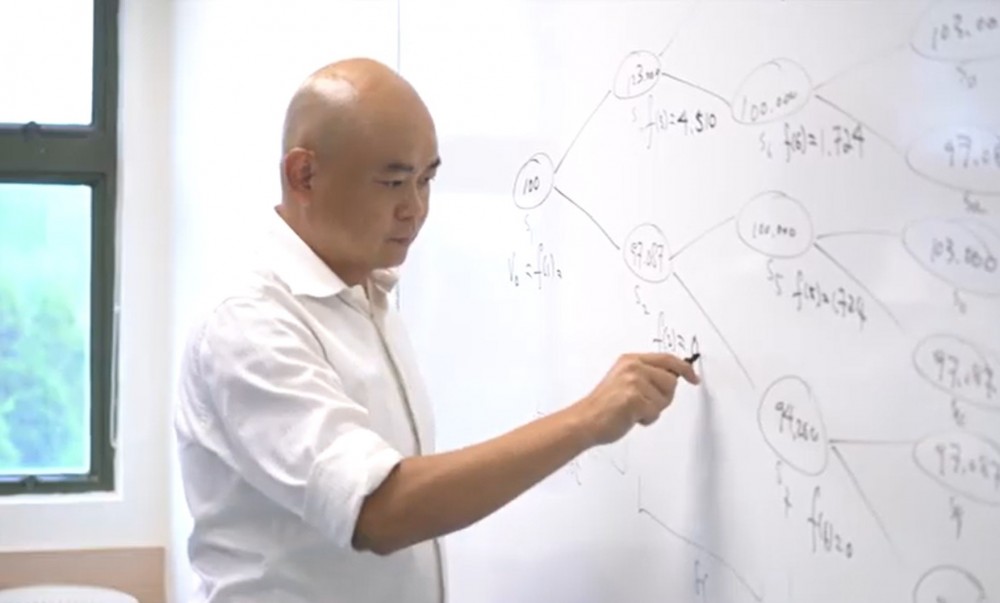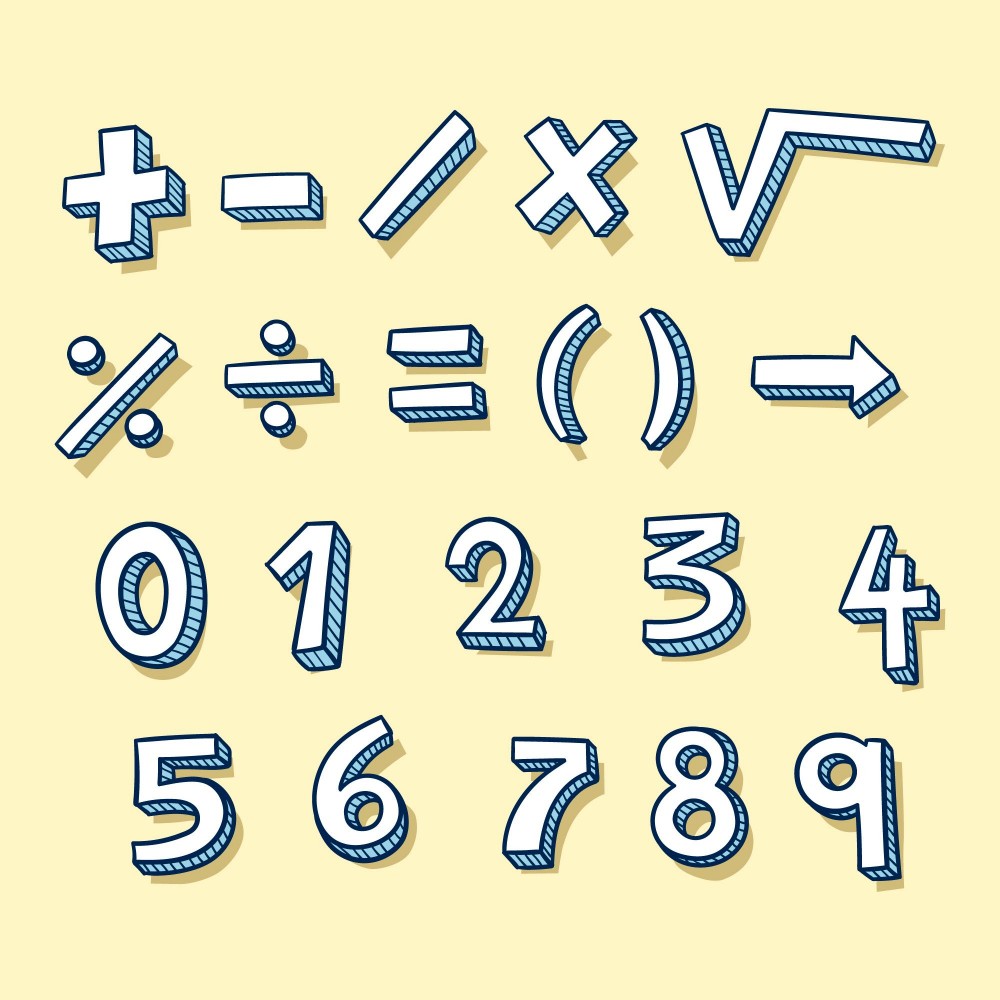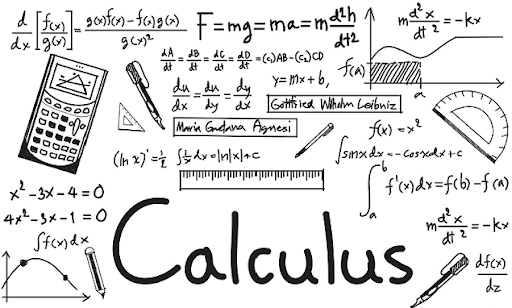The key to learning: Mastering the basics through repeated practice

Dr Kell Cheng Hiu-fai
Lecturer I, Department of Mathematics and Information Technology
As a mathematician teaching prospective Mathematics teachers, the question, “How does one teach and learn Mathematics effectively?” always pops up in my mind. During my many years of teaching Mathematics at this University, I find that there are no lack of students who can do well in applying formulas to tackle tests and examinations, but fail to understand how mathematicians came up with the formulae. I think this inadequacy provides a hint for how I should answer my question.
Let me start with some primary school Mathematics. Adding fractions is a difficult task for many small kids. They may understand how to add two and three, which is equal to five, but get stuck when they are asked to add one-third to one-half. To help them, we first need to guide them towards understanding what “one-third” and “one-half” actually means.
In Mathematics, natural numbers mean whole numbers, starting from one to infinity: 1, 2, 3, 4…. They are called integers in mathematical jargon. We use whole numbers, that is, natural numbers, to count things in our daily lives and nature, like how many cups are on the table, how many sheep are in the range, and how many students are in the classroom. As kids find it easy to understand natural numbers, they know how to add two natural numbers together.

Things in nature appear in their entirety most of the time: we seldom find half a sheep, one-third of a fish, or a quarter of a banana in nature. Thus, fractions are unnatural and abstract to a small kid. Kids may find it easy to add one and one together, but difficult to add one-third to one-third. In the latter example, the kid needs to visualise one-third as a unit in the arithmetic in question instead of one.
We can help kids visualise a fractional part of a whole by cutting a rope evenly into smaller parts. If you divide one rope into three equal parts, one-third means you are taking one part out of three, 1/3. And if you divide the same rope into six equal parts, one-third means you are taking two parts out of six, 2/6. Similarly, one-half means you are taking three parts out of six, 3/6.
If you want to add one-third to one-half, you are adding two parts to three parts of the same rope. This means you have five parts out of six. Therefore, it follows that the answer to “one-third plus one-half” is five sixths, 5/6. In mathematical notation, it looks like this:
1/3 + 1/2 = 2/6 + 3/6 = 5/6
Understanding the above, you should know that adding two to three and adding one-third to one-half are essentially the same thing. If a kid knows how to add two and three together, they are also able to add one-third to one-half. And if one is adept at the four basic operations of addition, subtraction, multiplication, and division, one can do all calculations involving these four manipulations. Once you master these, you can then move on to do more difficult tasks, such as calculations involving fractions. It is that simple. Nothing tricky.
There are two lessons to be drawn from the example above. First, you need to master addition and the other three basic arithmetic operations inside and out. You cannot skip a step. Second, you need to know how to reduce a puzzle into something you already know, just like transforming the question of “one-third plus one-half” into “two plus three”, and then perform the same trick you have already mastered.
They stare blankly at the question and find that the theorems do little to help them.
Requiring a small kid to grasp fundamental ideas is certainly taxing. It racks the brains of university students too. This comes from my experience in teaching Calculus to university students. I have come across many students who can competently answer differential and integral calculus questions by memorising the related mathematical theorems. However, when the questions are presented in a way that test their understanding of the basic ideas of Calculus, they become hopelessly lost. They stare blankly at the question and find that the theorems do little to help them.

Calculus has four underlying concepts: the idea of limits, continuity of functions, differentiability of a function, and integrability of a function. You can imagine a function is like a machine. For each input you put in, it will produce one output. In mathematical terms, the inputs are called independent variables, and the output is called the value of the function, alternatively called the functional value. The concept of limits is best understood within the realm of sequences. When a sequence converges to a concrete value, we say that the sequence is convergent, with the limit being that value. The study of limits amounts to the study of the convergence of sequences.
The continuity of function studies the convergence-preserving property of a function. Calculus is founded on the idea of limits and the continuity of a function. It enables mathematicians to calculate things that involve infinitesimal small parts. For instance, we can handle problems on rates of change and related topics with differential Calculus. In fact, it is Calculus that enables us to solve problems that were once impossible to solve before its invention.
Many university students know how to find the derivative and integral of a function by memorising and applying differential and integral calculus theorems. Sadly, not many of them understand the idea of limits and have little understanding of the continuity of functions. Because of these weaknesses, many students get stuck when encountering unusual questions involving a higher-level understanding of the property of a function. It is similar to how a pyramid cannot be built on a shaky foundation.
So, to answer the question I posed in the beginning, I believe that to learn Mathematics solidly and effectively, one must learn fundamental mathematical concepts in a systematic way – often through many hours of practice.
I apply this approach of systematic learning not only to studying Mathematics, but also to playing football and golf.
I apply this approach of systematic learning not only to studying Mathematics, but also to playing football and golf. Football is a game of dribbling, passing and shooting. To dribble well, you need to learn how to control the ball with different parts of your foot. Even harder, you need to keep hold of the ball while running fast. To shoot the ball, you need to swing your leg and hit the ball at the right angle. This sounds simple, but it takes a lot of repetitive – and sometimes boring – practice to master any of these skills.
Many people know that Argentinian football star Lionel Messi is a dribbling maestro. He has an excellent sense of movement and balance. He has all the skills, speed, stamina and agility to keep hold of the ball with his feet even when he is charging full speed ahead. Messi is a genius. There is something innate to him that others cannot copy. But even if we are not football geniuses like Messi, we can still enjoy the game if we master all the basic football skills.
I like playing golf too. In a sense, golf is a simple game. A golfer uses a club to put the ball in a series of holes with the fewest number of strokes. You must use the right swing posture to hit the ball consistently and properly. This is quintessential to the game. On top of all that, you need to have decent knowledge about choosing the right clubs and factoring in things like wind direction, swing speed, and lie. It is all easier said than done. Tiger Woods once practised six hours a day. Without practice, you can’t even hit the ball through. And you will find a sand bunker, pond, or downhill lie a nightmare when you need to hit your ball through and out of them.
There is no way one can confidently kick a football or complete a golf swing without mastering the basics of the game. Similarly, without a thorough understanding of the basic concepts in Mathematics, one can only do well on an operational level but is not really doing mathematics. After studying and teaching in the field of Mathematics for so many years, I believe the best pedagogy is getting to the basics of the subject matter and knowing all the developments the subject has gone through before reaching its present stage. And above all, it should be learnt in a systematic, step-by-step manner.
Perspiration is more important than inspiration. With due diligence, you can build a reasonably sturdy foundation in a subject, whether it is Mathematics, Physics, football, or golf. This will elevate you to a level where you can really have fun and enjoy the game. It will give you a firm intellectual foothold; from there, you can begin getting into the game.
Note: Dr Cheng joined the University in 2007 when it was still called The Hong Kong Institute of Education. He joined the then Department of Mathematics, Science, Social Sciences and Technology, which later changed its name to the Department of Mathematics and Information Technology. Dr Cheng’s research interests include Number Theory, Stochastic Calculus and Mathematics Education.
(Dr Kell Cheng collaborated with Tam Siu-man on this piece)

